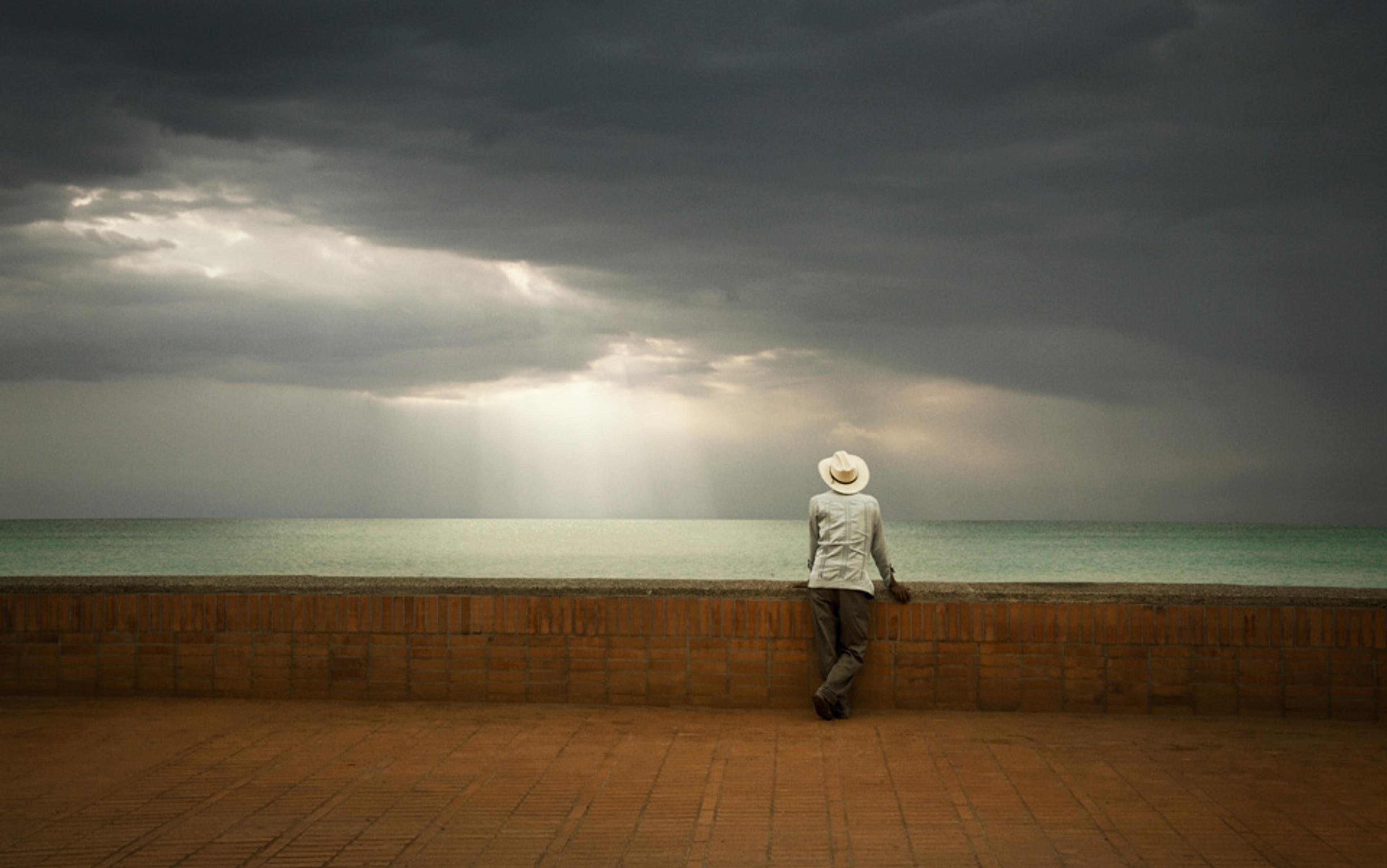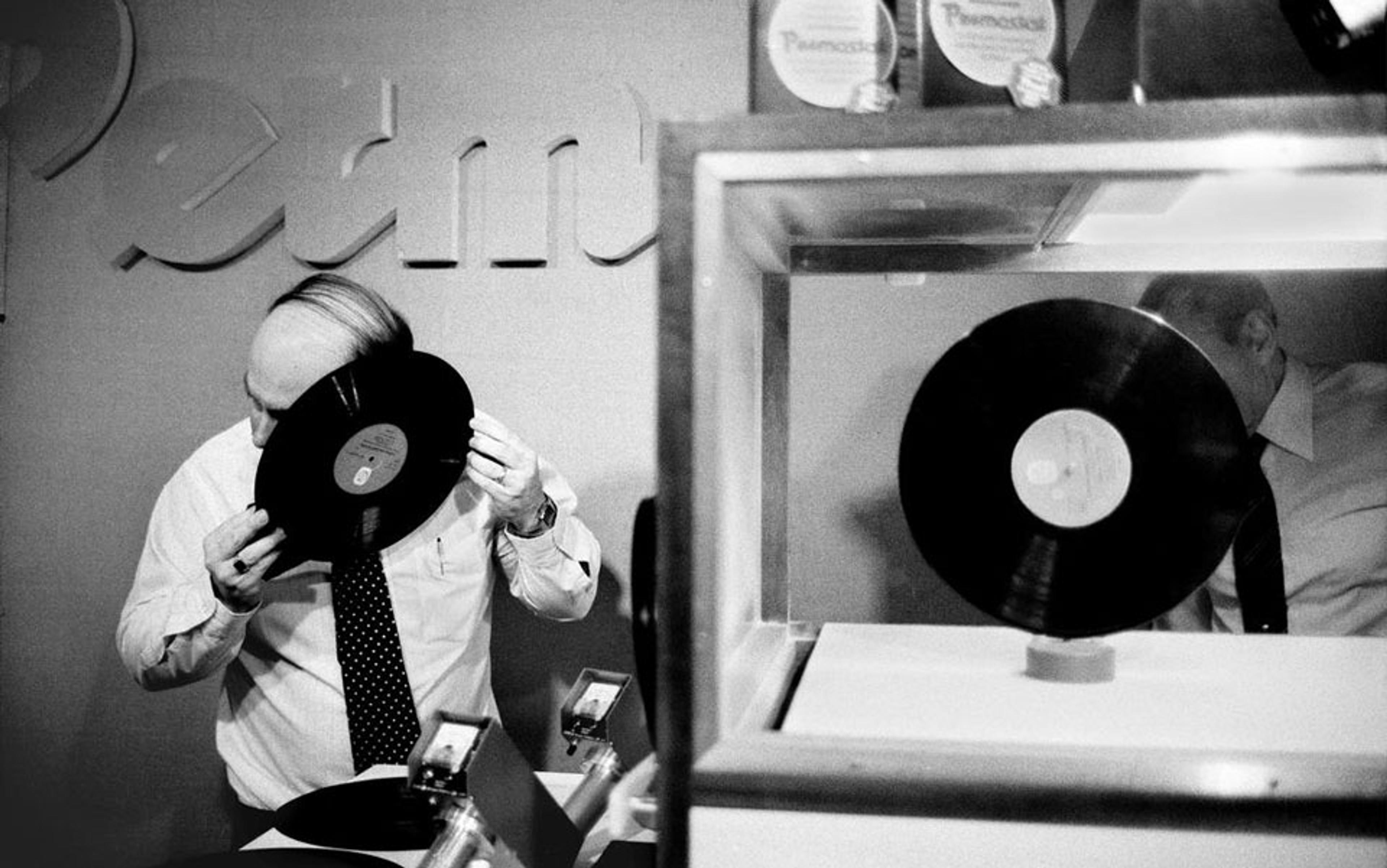Years ago, in my novel Cleaver (2006), I imagined a media man who is used to frantic bustle and talk going in search of silence. He flees to the Alps, looking for a house above the tree line – above, as he begins to think of it, the noise line; a place so high, the air so thin, that he hopes there will be no noise at all. But even in the South Tirol 2,500 metres up, he finds the wind moaning on the rock face, his blood beating in his ears. Then, without any input from his family, his colleagues, the media, his thoughts chatter ever more loudly in his head. As so often happens, the less sound there is outside, the more our own thoughts deafen us.
When we think of silence, because we yearn for it perhaps, or because we’re scared of it — or both — we’re forced to recognise that what we’re talking about is actually a mental state, a question of consciousness. Though the external world no doubt exists, our perception of it is always very much our perception, and tells us as much about ourselves as it does about the world. There are times when a noise out there is truly irritating and has us yearning for peace. Yet there are times when we don’t notice it at all. When a book is good, the drone of a distant lawnmower is just not there. When the book is bad but we must read it for an exam, or a review, the sound assaults us ferociously.
If perception of sound depends on our state of mind, then conversely a state of mind can hardly exist without an external world with which it is in relation and that conditions it — either our immediate present environment, or something that happened in the past and that now echoes or goes on happening in our minds. There is never any state of mind that is not in some part, however small, in relation to the sounds around it — the bird singing and a television overheard as I write this now, for example.
Silence, then, is always relative. Our experience of it is more interesting than the acoustic effect itself. And the most interesting kind of silence is that of a mind free of words, free of thoughts, free of language, a mental silence — the state of mind my character Cleaver failed to achieve despite his flight to the mountains. Arguably, when we have a perception of being tormented by noise, a lot of that noise is actually in our heads — the interminable fizz of anxious thoughts or the self-regarding monologue that for much of the time constitutes our consciousness. And it’s a noise in constant interaction with modern methods of so-called communication: the internet, the mobile phone, Google glasses. Our objection to noise in the outer world, very often, is that it makes it harder to focus on the buzz we produce for ourselves in our inner world.
There is, as it were, a catharsis of exhaustion, exhaustion with the dazzling, disturbing voice of the mind
Yet all of us, at least occasionally, reach the point where the motor of thought feels out of control. Thoughts run away with themselves, go nowhere new, and are nevertheless destructive in their insistent revisiting of where we’ve been a thousand times before. So much of Modernist literature is about this buzz of consciousness, emphasising its poetic quality. One thinks of James Joyce, or Virginia Woolf. Some, however, understood how exhausting and destructive it could be: a character who can’t still her thoughts was ‘destroyed into perfect consciousness’, writes D H Lawrence in his novel Women in Love (1920). By contrast, a certain genre of late 20th-century literature — from Samuel Beckett through Thomas Bernhard to Sandro Veronesi, David Foster Wallace and many others — is dominated by a voice constantly trying to explain the world, constantly denouncing the scandal of the world, constantly disappointed and frustrated, but also pleased with itself, pleased with its ability to be scandalised, a voice whose ceaseless questioning and criticising has long become a trap, from which consciousness seeks release in various forms of intoxication, or sleep, or suicide. There is, as it were, a catharsis of exhaustion, exhaustion with the dazzling, disturbing voice of the mind.
Such a mental voice is also a source of self-regard. This is the catch that springs the trap. The mind is pleased with the sophistication of its thinking. It wishes the monologue to end, and yet, simultaneously not to end. If it did end, where would identity be? It yearns for silence and fears silence. The two emotions grow stronger together. The more one yearns for silence, the more one fears the loss of identity if the voice should quieten. For example, when a person contemplates a radical change in life — going to live alone in the moors of Galway perhaps, or to a 10-day silent Buddhist retreat — the more he or she fears it, too, fears the moment of change. So our ideas of silence are tied up with questions of self-loathing and self-regard. The end of the monologue is inviting but also frightening, the way children are frightened of going to sleep.
Our desire for silence often has more to do with an inner silence than an outer. Or a combination of the two. Noise provokes our anger, or at least an engagement, and prevents inner silence. But absence of noise exposes us to the loud voice in our heads. This voice is constitutive of what we call self. If we want it to fall silent, aren’t we yearning for the end of self? For death, perhaps. So talk about silence becomes talk about consciousness, the nature of selfhood, and the modern dilemma in general: the desire to invest in the self and the desire for the end of the self.
Of course, we have strategies for getting by. There are soft solutions such as listening to music, or reading. Consciousness is invited to follow someone else’s score or storyline. We temporarily hand over the controls to another director. But as soon as we stop reading or listening, the mental noise starts again. We haven’t resolved anything or learnt anything about ourselves. We haven’t changed the nature of the discomfort.
More radical, and mortifying perhaps, are solutions involving ritual prayer, rosaries, or mantras. Such an approach feels like a full-scale assault on the self, with an acoustic weapon. Despite, or perhaps because of, my religious childhood, I have never tried this. I’ve never desired a mantra. I suspect, as with music, once the mantra is over, the chattering self would bounce back more loquacious and self-righteous than ever.
Or one might try Vipassana — a form of mediation that goes to the heart of this conflict between yearning for silence and fearing it. Without being too specific about why I originally approached Vipassana — let’s just say that I had health problems, chronic pain — someone suggested that this discipline might help. I had become aware that though my pains were not, as they say, merely in the mind, my mental state had certainly contributed to the kind of physical tensions that, over many years, had begun to make my life a misery.
The first Vipassana retreat I attended, some five years ago now, was in the mountains north of Milan where I live and work. There seemed no point in going further afield merely to sit on a cushion. In the opening session, I was asked to take a vow of silence for the full 10 days of my stay. So, for all this time, I lived in silence, ate in silence. Above all, I sat for many hours a day, as many as 10, in silence. But there were no chants or mantras to still the mind and get one through. Rather, I was encouraged to substitute, slowly and patiently, my normally talkative consciousness with an intense awareness of breathing and sensation; that is, of the present animal state of our being.
We use sound and movement to avoid the irksomeness of stasis. You shift from foot to foot, you move from room to room
It’s fairly easy to concentrate on the body in motion. If you’re running or swimming, it’s possible to move into a wordless or semi-wordless state that gives the impression of silence for long periods. In fact one of the refreshing, even addictive, things about sport is the feeling that the mind has been given a break from its duty of constantly building up our ego.
But in Vipassana you concentrate on sensation in stillness, sitting down, not necessarily cross-legged, though most people do sit that way. And sitting without changing position, sitting still. As soon as you try to do this, you become aware of a connection between silence and stillness, noise and motion. No sooner are you sitting still than the body is eager to move, or at least to fidget. It grows uncomfortable. In the same way, no sooner is there silence than the mind is eager to talk. In fact we quickly appreciate that sound is movement: words move, music moves, through time. We use sound and movement to avoid the irksomeness of stasis. This is particularly true if you are in physical pain. You shift from foot to foot, you move from room to room.
Sitting still, denying yourself physical movement, the mind’s instinctive reaction is to retreat into its normal buzzing monologue — hoping that focusing the mind elsewhere will relieve physical discomfort. This would normally be the case; normally, if ignored, the body would fidget and shift, to avoid accumulating tension. But on this occasion we are asking it to sit still while we think and, since it can’t fidget, it grows more and more tense and uncomfortable. Eventually, this discomfort forces the mind back from its chatter to the body. But finding only discomfort or even pain in the body, it again seeks to escape into language and thought. Back and forth from troubled mind to tormented body, things get worse and worse.
Silence, then, combined with stillness — the two are intimately related — invites us to observe the relationship between consciousness and the body, in movement and moving thought. Much is said when people set off to meditation retreats about the importance of ‘finding themselves’. And there is much imagined drama. People expect old traumas to surface, as though in psychoanalysis. In fact, what you actually discover is less personal than you would suppose. You discover how the construct of consciousness and self, something we all share, normally gets through time, to a large extent by ignoring our physical being and existence in the present moment. Some of the early names for meditation in the Pali language of the Buddhist scriptures, far from linking it to religion, referred only to ‘mental exercises’.
This form of meditation alters the mind’s relationship with the body. It invites the meditator to focus attention on all parts of the body equally, without exception, to guide the consciousness through the body and to contemplate sensation as it ebbs and flows in the flesh, and this without reacting in any way — without aversion to pain, without attachment to pleasure. So we become aware that even when we are still, everything inside us is constantly moving and changing.
Moreover, this ‘activity’ is not subordinated in the mind to any other. One renounces any objective beyond the contemplation itself. You are not meditating in order to relax, or to overcome pain, or to resolve a health problem, or to achieve inner silence. There is no higher goal but to be present, side by side with the infinitely nuanced flux of sensation in the body. The silence of the mind puts you in touch with the body. Or simply, silence of the mind is awareness of being.
It is hard, at the beginning, to focus, first for minutes at a time, then for hours, on one’s breathing. It is hard, at first, to find any sensation at all in many parts of the body when they are still — the temples, the elbows, the calves. Yet once the mind does latch on to sensation, or when sensation responds to the mind’s patient probing, all at once it becomes easier. Suddenly the body becomes interesting and one’s obsessive interest in one’s own wordy thoughts begins to dissolve. Language melts away and in the silence all kind of changes occur in the body.
The process is neither that of a single switch being turned, nor of a steady continuum, but of a series of small gains and losses; perhaps a larger step forward, then a small relapse. If one is persistent, undaunted, in one’s attempts to concentrate, if one is successful in showing neither aversion to pain nor indulgence in pleasure, then, very slowly, the stillness and silence deepen in an atmosphere of beatitude that is simultaneously and indivisibly both physical and mental. It is as if, as the body is slowly put together and all its component parts unite in an intense present, so the historical self is taken apart and falls away. At no point is it experienced as a loss, but rather as a fullness of existence; something brimful, very ordinary and very beautiful.
The words we constantly use and the narratives we write reinforce a drama of selfhood that we in the West complacently celebrate. There is also much consolation taken in the way in which writing and narrative can transform emotional pain into a form of entertainment, wise and poignant in its vision of our passage through the world, intense and thrilled by its own intensity. Narrative is so often the narrative of misery and of the passage through misery.
What silence and meditation leaves us wondering, after we stand up, unexpectedly refreshed and well-disposed after an hour of stillness and silence, is whether there isn’t something deeply perverse in this culture of ours, even in its greatest achievements in narrative and art. So much of what we read, even when it is great entertainment, is deeply unhelpful.






